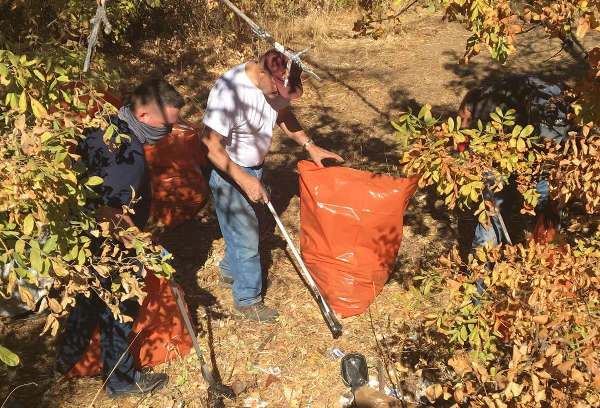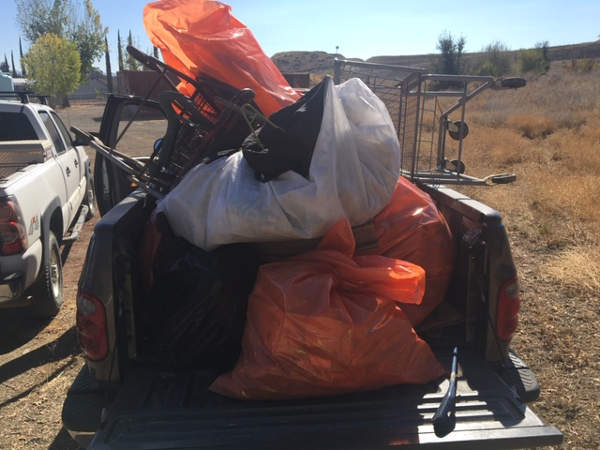LAKE COUNTY, Calif. – A number of local organizations have put together Halloween events for children and families that offer fun while following safety protocols to protect against COVID-19.
The following is a list of events planned around Lake County for Friday, Oct. 30, and Saturday, Oct. 31.
FRIDAY, OCT. 30CLEARLAKE OAKSMoose Lodge presents ‘Haunted Lodge’The Clearlake Oaks Moose Lodge No. 2283 will present “Haunted Lodge” from 6:30 to 9 p.m.
They invite community members to come and be scared.
The cost is $3 at the door. Tickets will be sold at the door.
They will practice COVID-19 safety measures.
Food and beverages will be available for purchase.
The lodge is located at 15910 Moose Lodge Lane, Clearlake Oaks.
LAKEPORTHaunted Lake CountyHaunted Lake County will offer a COVID-19 safe and scary drive-thru Halloween experience from 5 to 10 p.m. at the Lake County Fairgrounds, 401 Martin St.
From 5 to 6 p.m. is a less-scary hour for children.
The show for mature audiences takes place from 6 to 10 p.m.
The requested donation is $20 per vehicle, with proceeds to benefit the Lake County Fair Foundation.
SATURDAY, OCT. 31CLEARLAKEHalloween Trunk or Treat at Austin ParkEnjoy some spooky fun at the annual Trunk or Treat event in Austin Park from 4 to 6 p.m.
Event parking will be available in Haverty Field near Austin Park, 14077 Lakeshore Drive.
There will be decorated trunks, music and candy.
Masks and social distancing will be required.
The event takes place rain or shine.
CLEARLAKE OAKSCommunity Halloween Trunk or TreatThe Clearlake Oaks Moose Lodge No. 2284 will hold its third annual Community Halloween Trunk or Treat from 5 p.m. until the treats are gone.
The event will offer a safe place for community trick or treating. They will practice masking, hand sanitizing and social distancing for everyone’s safety.
There will be a best-decorated vehicle trunk contest.
Food and beverages will be available for purchase for to go or outside dining.
The lodge is located at 15910 Moose Lodge Lane, Clearlake Oaks.
Moose Lodge presents ‘Haunted Lodge’The Clearlake Oaks Moose Lodge No. 2283 will present “Haunted Lodge” from 6:30 to 9 p.m.
They invite community members to come and be scared.
The cost is $3 at the door. Tickets will be sold at the door.
They will practice COVID-19 safety measures.
Food and beverages will be available for purchase.
The lodge is located at 15910 Moose Lodge Lane, Clearlake Oaks.
Haunted drive-thruMarcel’s Drive-Thru will host a haunted drive-thru beginning at 7 p.m.
They will be handing out candy bags to every child. Hot cocoa and coffee also will be available for purchase.
People must stay in their vehicle at the event.
Marcel’s is located at 12609 E. Highway 20.
COBBHalloween drive-thru at the Little Red SchoolhouseThe Mountain Lions Club of Cobb will host a drive-thru Halloween event at the Little Red Schoolhouse from 6 to 8 p.m.
Come in your costume and pick up treat bags and goodies. There will be special bags available for those with allergies.
The Little Red Schoolhouse is located at 15780 Bottle Rock Road.
KELSEYVILLELittle Monsters Halloween Trunk or TreatRichmond Park Bar and Grill will hold the Little Monsters Halloween Trunk or Treat from 2 to 5 p.m.
Costumes are admired but not mandatory.
COVID-19 restrictions and social distancing will apply.
Richmond Park is located at 9435 Konocti Bay Road.
Clear Lake Riviera Community Association and Ely Stage Stop Trunk or TreatThe Clear Lake Riviera Community Association along with the Ely Stage Stop will offer a trunk or treat event from 4 to 6 p.m.
The event will be held at the Ely Stage Stop and Country Museum, 9921 Soda Bay Road.
Kelseyville Drive-Thru Halloween The Kelseyville Drive-Thru Halloween will take place from 4 to 7 p.m. at 5846 Live Oak Drive, and is hosted by West Coast Fire & Water.
Kids – put on your favorite costume, grab your favorite driver, and head on over for a fun, free Kelseyville Halloween.
Drive through the parking lot where businesses and organizations from the community will be handing out candy.
This is a COVID-safe environment: Candy is commercially packaged, vendors will be wearing masks and gloves, attendees will stay socially distanced by remaining in their cars.
For more information, contact West Coast Fire & Water at
This email address is being protected from spambots. You need JavaScript enabled to view it. or 707-972-7946.
LAKEPORTCorn maze and pumpkin patchThe Wildhurst Vineyards corn maze and pumpkin patch will have its final day of the season on Halloween.
The maze, located at 4405 Thomas Drive in Lakeport, across from Rainbow Ag, will be open from 11 a.m. to 5 p.m.
The cost is $10 per person for adults, $5 for children. People are asked to purchase their tickets ahead of time here:
https://thatcornmaze.square.site.
Due to COVID-19, masks will be required along with social distancing.
A portion of the funds will benefit the Kelseyville High School FFA.
Drive-thru trick or treatingLAKEPORT, Calif. – A drive-thru trick or treat event for children will be held on Saturday, Oct. 31, in downtown Lakeport.
The city of Lakeport, Lakeport Main Street Association and Kiwanis Club of Lakeport are hosting the event, which will take place from 4 to 7 p.m., or until treats run out.
Drive-thru trick or treating will take place on Park Street between First and Third streets.
Vehicles enter from First Street onto Park Street. Follow the signs.
Participants must stay in their vehicles to receive a treat.
Haunted Lake CountyHaunted Lake County will offer a COVID-19 safe and scary drive-thru Halloween experience from 5 to 10 p.m. at the Lake County Fairgrounds, 401 Martin St.
From 5 to 6 p.m. is a less-scary hour for children.
The show for mature audiences takes place from 6 to 10 p.m.
The requested donation is $20 per vehicle, with proceeds to benefit the Lake County Fair Foundation.
‘Rocky Horror Picture Show’ screeningLakeport Auto Movies will host a showing of the cult classic, “The Rocky Horror Picture Show” at 11 p.m. Gates open at 10:30 p.m.
Tickets are $20 per car when purchased online at
www.lakeportautomovies.com. Snacks also can be ordered online.
Face masks are required at the box office and when visiting the snack bar or restrooms. Be sure to check out the drive-in’s COVID-19 rules on its website for a full list of social distancing rules and protocols.
MIDDLETOWNHometown Halloween“Hometown Halloween” will be held at Middletown Central Park from noon to 3 p.m.
The afternoon of old-fashioned family fun will include corn dogs and other foods, games, music, raffles and a costume parade.
Masks and social distancing are strongly encouraged.
Middletown Central Park is located at 15229 Central Park Road.
Proceeds will benefit Promise 4 Hope.

 How to resolve AdBlock issue?
How to resolve AdBlock issue? 

















